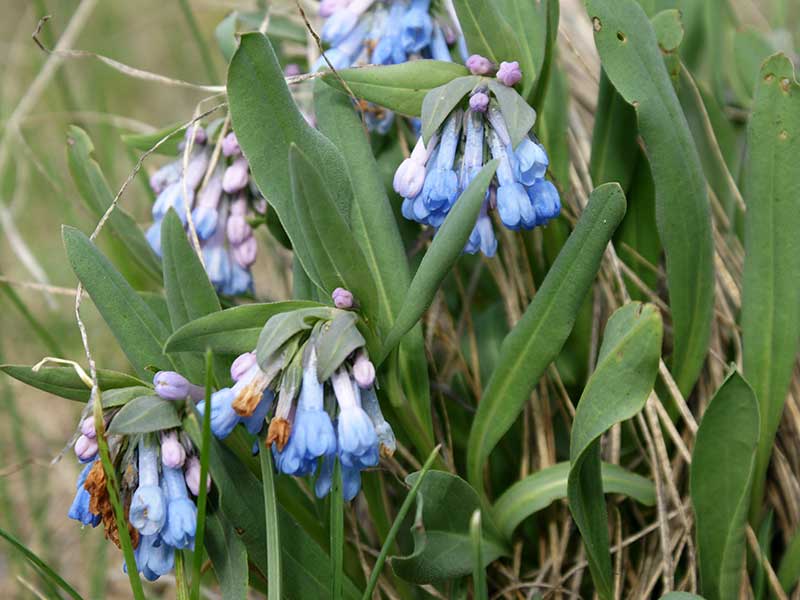Mertensia oblongifolia / sagebrush bluebell
- bright blue-to-purplish flowers, hanging and downward facing
- narrow tube that flares abruptly to bell
- blooms in very early spring, soon after snow-melt
- usually associated with sagebrush
Also known as: leafy bluebell
Sagebrush bluebell is considered a common early spring flower. Perhaps it is too common to elicit a lot of interest, because there is piddling little on the web about bluebells (at least those in the Boraginaceae). I don’t think it’s fair considering how much bandwidth is given to weeds.
This species of bluebell has bright blue-to-purplish (rarely pink; or white) blooms. OK, all of them do. But this one is typically found on sagebrush-covered foothills. It appears in very early spring, soon after snow-melt. All mertensias have five sepals enclosing five petals. These form a tube that flares rather abruptly into the free, bell part of the petals. One of the characters used to distinguish species is the length of the tube. Sagebrush bluebell has a longer tube with less pronounced flair than “some of the other species”. So if you have a bunch to compare, this might be useful. The flowers hang downward facing in dense clusters, each less than ½ inch long.
Sometimes, the inflorescence types identified in these write-ups are confusing. In that case, you might be happy to know you (and I) are not alone. The UC Berkeley Jepson Herbarium site describes the flower clusters as “cymes, or panicle-, raceme-, head- or spike-like.” Ha!
Sagebrush bluebell grows erect and, although it seems strange that sources point this out, the stems are firmly attached. The stems arise from a thick, branching caudex. They may or may not be hairy. There are basal leaves that have short petioles. These may disappear before flowering starts. The leaves which are visible during flowering are oval to lance-shaped, and are found all along the stem.
| Color | |
|---|---|
| Family | |
| Blossom size | |
| Inflorescence size | |
| Inflorescence type | |
| When? | |
| Where? |


